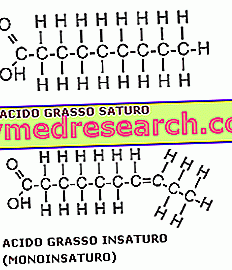TAREG ® is a Valsartan based drug
THERAPEUTIC GROUP: Antihypertensives - angiotensin II antagonists
IndicationsAction mechanismStudies and clinical effectiveness Usage and dosage instructionsWarnings Pregnancy and lactationInteractionsContraindicationsUndesirable effects

Indications TAREG ® Valsartan
TAREG ® is indicated in the treatment of essential arterial hypertension and in cases of recent myocardial infarction, with relative symptomatic heart failure or with left ventricular systolic dysfunction.
TAREG ® can be used in combination therapy for the treatment of heart failure.
TAREG ® Valsartan mechanism of action
Valsartan, the active ingredient of TAREG ® is absorbed in the gastro-intestinal tract reaching the maximum plasma concentration between the second and the fourth hour. Mainly linked to plasma proteins, it boasts a bioavailability of around 23%, which can be reduced by concomitant food intake.
Like the other active ingredients of the same pharmaceutical category, Valsartan works by binding the AT1 receptor with greater affinity than angiotensin II, thus preventing all the biological reactions behind this activation. The biological action of valsartan is realized in the reduction of peripheral vasoconstriction, in the decrease of aldosterone levels and in a better control of the electrolyte balance. All this translates into better blood pressure control and a protective action against the cardiovascular system.
After about 6 hours, corresponding to the half-life of this active ingredient, valsartan is excreted unchanged through the faeces for about 83%, and through the urine for the remaining part.
Studies carried out and clinical efficacy
1 EFFECTIVENESS OF VALSARTAN IN THE TREATMENT OF HYPERTENSION
There are several angiotensin II antagonist drugs used in the treatment of hypertension. This study sought, through a critical review of the literature, to evaluate the therapeutic efficacy of the single active ingredient. As for valsartan, this has been shown to be effective in reducing the systolic pressure by about 15mmHg and the diastolic pressure by 11mmHg, making it more effective - at the same dose - than other analogues, such as losartan.
2. HIGH-DOSE VALSARTAN SECURITY
Commonly, in order to avoid side effects due to the administration of high doses of a drug, combined therapy is chosen, which allows to obtain the same therapeutic effect by using lower doses of a drug but combining it with others. In this study it was evaluated how risky high-dose intake of valsartan could be. The results obtained show not only a persistent therapeutic efficacy over time, but also the absence of clinically relevant side effects, even at doses of valsartan of 320 mg daily, thus suggesting the possibility of resorting - without serious consequences - to monotherapy in the treatment of patients suffering from moderate hypertension.
3. VALSARTAN: POSSIBLE ANTI-DIABETIC ROLE?
The study in question questions the antidiabetic potential of valsartan. The discussion arose from the observation of a decreased onset of diabetes in hypertensive patients who underwent valsartan therapy, quantifiable at 14% compared to placebo. Researchers still question the possible mechanism of action of the active principle on glucose metabolism and of course on personal susceptibility - and on that induced by the metabolic syndrome - related to the onset of diabetes mellitus.
Method of use and dosage
TAREG ® 80/160 mg capsules or valsartan 40/320 mg tablets: for the treatment of arterial hypertension it is generally recommended to take 80 mg of valsartan in a single daily dose. The antihypertensive effect appears within 14 days, to maximize only the fourth week of treatment. In case of reduced therapeutic effect, the doctor may decide to increase the dosage up to 320 mg / day, or combine TAREG ® with other antihypertensive drugs.
In the treatment of recent myocardial infarction, instead it is preferred to start with a daily dosage of 20 mg twice a day for two days, to then provide within 2 weeks the gradual increase of the doses, up to 160 mg twice a day within three months.
In the treatment of heart failure, instead, maximum doses of 80 mg are recommended twice a day.
It is of fundamental importance that the therapeutic protocol is drawn up by the doctor, after a careful assessment of the patient's physio-pathological state, the severity of his disease and the susceptibility to drug treatment.
Warning TAREG ® Valsartan
The use of TAREG ® should be combined with a periodic control of the plasma levels of electrolytes, in particular sodium and potassium, and of creatinine and azotemia, with particular care in patients suffering from renal artery stenosis or treated with potassium-sparing diuretics . In the latter case, in fact, the increased risk of hyperkalaemia could put the patient's health at risk.
Blood pressure monitoring and possibly dose adjustment may be necessary in patients with depleted, dehydrated or undergoing concomitant intake of antihypertensive drugs.
It should also be reiterated that in patients with recent myocardial infarction, or with heart failure, targeted therapeutic protocols should be developed, with a reduction of the maximum recommended dose and with continuous monitoring of renal function.
Although even in this case there is no direct evidence to correlate the intake of valsartan with a reduced ability to drive and use machinery, some typical effects of antihypertensive therapy (especially vertigo, headache and drowsiness), could interfere with normal perceptive and reactive abilities of the patient.
PREGNANCY AND BREASTFEEDING
TAREG ® should not be taken during the entire period of pregnancy, given the presence of numerous studies demonstrating the teratogenic and mutagenic potential on the fetus of valsartan and other angiotensin II antagonists. The harmful action would also be exercised by alteration of normal fetal blood perfusion, with possible alterations in the normal development process.
Administration of TAREG ® is also not recommended during breastfeeding, given the low safety profile of the active ingredient and given the absence of experimental evidence demonstrating the lack of secretion in breast milk.
Interactions
The simultaneous intake of potassium-sparing diuretics and / or supplements of this mineral could lead to an increase in blood potassium concentrations and lead to hyperkalemia, potentially dangerous for the patient's health.
The antihypertensive action of TAREG ® can be enhanced by the concomitant administration of antihypertensive drugs of various nature. In this case it is necessary to have a routine control of the pressure and possibly an adjustment of the drug therapy in order to avoid hypovolaemic crises.
The concomitant administration of non-steroidal anti-inflammatory drugs could determine a reduction in the therapeutic efficacy of TAREG ® contributing to the deterioration of renal function.
It is also useful to remember that TAREG ® could increase the toxicity of lithium.
TAREG ® Valsartan contraindications
TAREG ® is contraindicated in case of hypersensitivity to one of its components and metabolites, in case of obstruction of the biliary tract, severe hepatic insufficiency, biliary cirrhosis, cholestasis, as well as in pregnancy and lactation.
Undesirable effects - Side effects
Clinical studies and post-marketing assessment of the safety of TAREG ® have shown a good tolerability of the drug, with incidence of side effects that is neither statistically significant nor clinical. The most common effects were dizziness, nausea and diarrhea, while especially in particular categories of patients at risk, administration of TAREG ® led, albeit in rare cases, to hypotension, orthostatic hypotension, hyperkalemia, dizziness, myalgia, deterioration of renal function with increased creatinine values, and alteration of some blood chemistry parameters.
In any case, the effects were transitory and minor.
There have been rare cases of hypersensitivity to one of the components of TAREG ® thus confirming the hypothesis of a good tolerability of the drug.
Note
TAREG ® is salable only under medical prescription.



